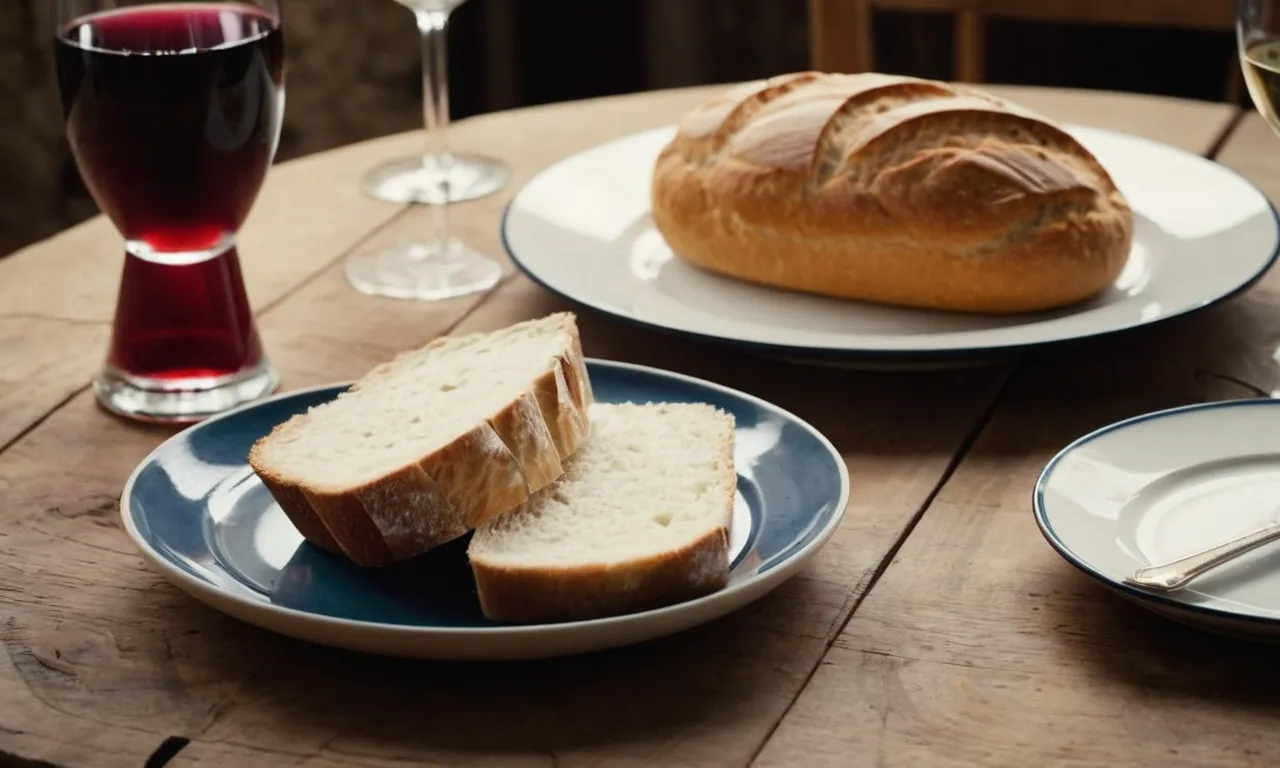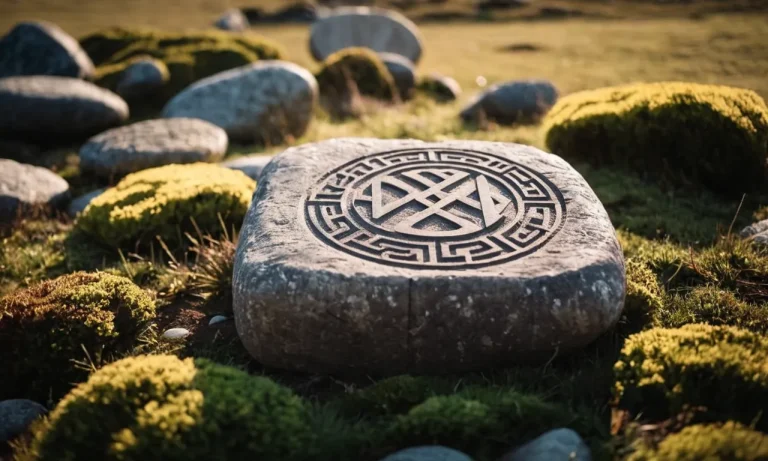What Did Jesus Eat? A Thorough Look At The Diet Of Jesus Christ
If you’re reading this, chances are you’re curious about the diet and eating habits of one of the most influential figures in human history – Jesus Christ.
With over 2 billion followers worldwide, Christianity has shaped cultures across the globe. At the heart of this faith lies its founder, Jesus.
But what did this humble carpenter from Nazareth 2,000 years ago eat daily?
If you’re short on time, here’s a quick answer to your question: Jesus, like most Jews of his day, likely ate a diet centered around grains, vegetables, fruit, fish, legumes, olives, and olive oil, with meat consumed on special occasions.
Jewish customs and law influenced his diet, the climate of ancient Israel, and his modest means.
In this comprehensive article, we’ll take an in-depth look at what scholars and historians believe Jesus regularly consumed based on biblical texts and historical sources.
We’ll cover the foods native to Galilee, Jewish dietary customs, Jesus’s socioeconomic status, biblical references to meals, and more.
By the end, you’ll have a thorough understanding of the typical first-century Galilean diet and eating habits that shaped Jesus’s life and ministry.
The Geography and Climate of Ancient Galilee
Plant Life of the Region
The region of ancient Galilee was known for its fertile and vibrant plant life. Located in modern-day northern Israel, Galilee had a Mediterranean climate with warm, dry summers and mild, rainy winters. This climate allowed for a diversity of plant species to thrive.
Galilee was situated between the Mediterranean Sea to the west and the Jordan River valley to the east.
With the elevation rising from the Jordan River valley up to the Galilean highlands, there was a range of microclimates that supported different types of vegetation.
In the lower-lying regions near the Sea of Galilee, date palms, citrus trees, fig trees, olive groves, and grapevines were abundant. The alluvial soils and availability of water allowed these fruit trees and vines to flourish.
Important crops like wheat, barley, lentils, and chickpeas were also grown in the valleys and plains.
In the higher elevations of the Galilean highlands, oak and terebinth trees dotted the landscape. Pistachio trees were also native to the region.
Aromatic plants like sage, rosemary, and thyme grew wild on the hillsides. The forests and brush provided habitat for wildlife.
The Jordan River valley contained lush wetlands and thickets of papyrus reeds. This riparian habitat was filled with biodiversity. The variety of microclimates and ecosystems in Galilee allowed it to be agriculturally productive and support a thriving population in Jesus’ time.
Animal Life of the Region
The geography and climate of ancient Galilee also supported a diversity of animal life that Jesus would have encountered. The Sea of Galilee was filled with fish like tilapia, catfish, and sardines that provided an important food source.
Fishermen ventured out onto the lake daily to haul in their catches.
In the Jordan River ecosystem, massive catfish swam alongside otters, mollusks, and crocodiles. Hippos and wild boar inhabited the papyrus wetlands along the riverbanks. Birds like herons, storks, and kingfishers hunted fish in the lush waterways.
Mammals like foxes, jackals, hyenas, and wolves roamed the Galilean countryside, foraging on smaller prey.
Wild goats inhabited the highlands, climbing the steep cliffs and grazing on scrub vegetation.
Large predators like leopards and bears were also native to the region but disappeared over time due to human activity.
Domesticated animals like sheep, goats, cattle, horses, and donkeys were essential to everyday life.
Camels transported goods through the trade routes crisscrossing Galilee. Pigeons, doves, chickens, and other fowl were kept by households.
This abundance of animal life intertwined with the daily existence of Jesus and the Galilean people. The region’s biodiversity and natural resources sustained human communities for thousands of years.
Even today, archaeologists uncover evidence of the rich flora and fauna that populated ancient Galilee during Jesus’ lifetime.

Jewish Dietary Laws and Customs
Kosher Foods
As a devout Jew, Jesus would have followed the kosher dietary laws outlined in the Torah. Kosher foods are those deemed fit and lawful to eat according to Jewish law.
The main criteria for kosher foods are that they come from permissible sources and are prepared according to specific guidelines.
For example, kosher land animals must chew their cud and have cloven hooves, while fish need fins and scales to be considered kosher.
Jesus would have eaten meat only from permissible animals like cattle, sheep, goats and some fowl. He would have avoided pork and shellfish, as the Old Testament prohibited consumption of those. Fruits, vegetables, eggs and dairy were also permitted in a kosher diet at the time.
There were also rules around not mixing meat and dairy in a meal. Overall, observing kashrut provided a way for Jesus to honor God by being discerning about his food choices.
Cooking Methods
The kosher laws also regulated how food was prepared. Meat could not be eaten raw and had to be salted to remove all blood. Fruits and vegetables were checked meticulously for insects. Cooking utensils for meat and dairy also could not be interchanged.
Official kosher inspectors examined food preparations closely. Most likely, Jesus adhered to kosher cooking methods to keep a clean diet before God.
In Jesus’ time, cooking was done over open fires or clay ovens. Food was boiled, baked, roasted and grilled using basic ingredients like wheat, barley, lentils, olives, grapes and fish.
As an observant Jew, Jesus would have eaten his meals following the guidelines of kashrut for cooking.
Daily Meals and Fasting
An ordinary Jewish person in Jesus’ day ate two to three meals daily. The main meal happened mid-morning, with a lighter meal in the evening.
Breads, fruits, cheeses and wine were common. On Sabbath, Jesus would have enjoyed a feast-like spread.
The Mishnah records that the Sabbath table should have fish, meat, vegetables and even delicacies if possible.
Jesus also fasted, as Scripture records him abstaining from food for 40 days and nights. Fasting connected him more deeply to God. Jesus taught that fasting should be done with the right motives, not to impress others. Most likely he joined other Jews in fasting during Yom Kippur and other holy days.
Overall, Jesus’ daily diet followed Jewish customs, while he focused on the inner spiritual meaning behind dietary regulations.
Biblical References to Jesus’s Meals and Eating Habits
Accounts of Jesus Eating Grain, Fish, Bread, and Wine
The Gospels contain several references to Jesus eating grain, fish, bread, and wine. For example:
- In Matthew 12:1, Jesus and his disciples pick heads of grain to eat on the Sabbath.
- In John 21:9-13, the resurrected Jesus eats fish and bread with his disciples by the Sea of Galilee.
- In Luke 24:28-31, the resurrected Jesus breaks bread with two disciples in Emmaus.
- In Matthew 26:26-29, Jesus shares bread and wine with his disciples at the Last Supper.
These passages depict Jesus consuming common foods like grain, fish, bread and wine. They reinforce his full humanity and earthly life in first-century Galilee.
Jesus’s Last Supper and Passover Meal
The Last Supper is widely understood to be a Passover meal that Jesus shared with his disciples on the night before his crucifixion.
Passover celebrates God delivering the Israelites from slavery in Egypt, as described in Exodus 12. The centerpiece is the Passover lamb.
The Last Supper accounts in Matthew 26:17-30, Mark 14:12-26, and Luke 22:7-23 portray Jesus and the disciples eating the Passover meal together. This likely included roasted lamb, unleavened bread, bitter herbs, fruit, and wine.
Jesus connects the bread and wine to his impending sacrifice, establishing them as symbols of the new covenant.
By sharing this pivotal Passover feast with his disciples, Jesus reinterprets the Exodus story around himself and institutes the Eucharist, which the church continues to celebrate.
Jesus Feeding the Multitudes
All four Gospels record Jesus miraculously feeding multitudes of people with a small amount of food (Matthew 14:13-21, Mark 6:31-44, Luke 9:10-17, John 6:1-15). In one account, Jesus feeds 5,000 men with just five loaves of bread and two fish.
In another, he feeds 4,000 with seven loaves and a few small fish.
After prayer and blessing by Jesus, the food incredibly multiplies to satisfy the entire crowd with baskets of leftovers.
These stories illustrate Jesus supernatural power and divine compassion. As the provider of physical and spiritual nourishment, Jesus embodies God’s care for his people.
Conclusion
In conclusion, while we don’t have an explicit biblical menu for Jesus’s daily diet, based on what we know about first-century Galilee, Jewish customs, his humble means, and scriptural references, we can piece together a pretty good idea of what he likely ate.
Jesus’s diet centered around common foods like grains, vegetables, fruit, fish, legumes, and olive oil. While he ate bread and fish often as a staple, his consumption of meat was probably limited to special occasions like festivals. wine was commonly drunk.
As a faithful Jew, he observed kosher dietary laws. And he advocated for feeding the hungry and sharing meals with others.








